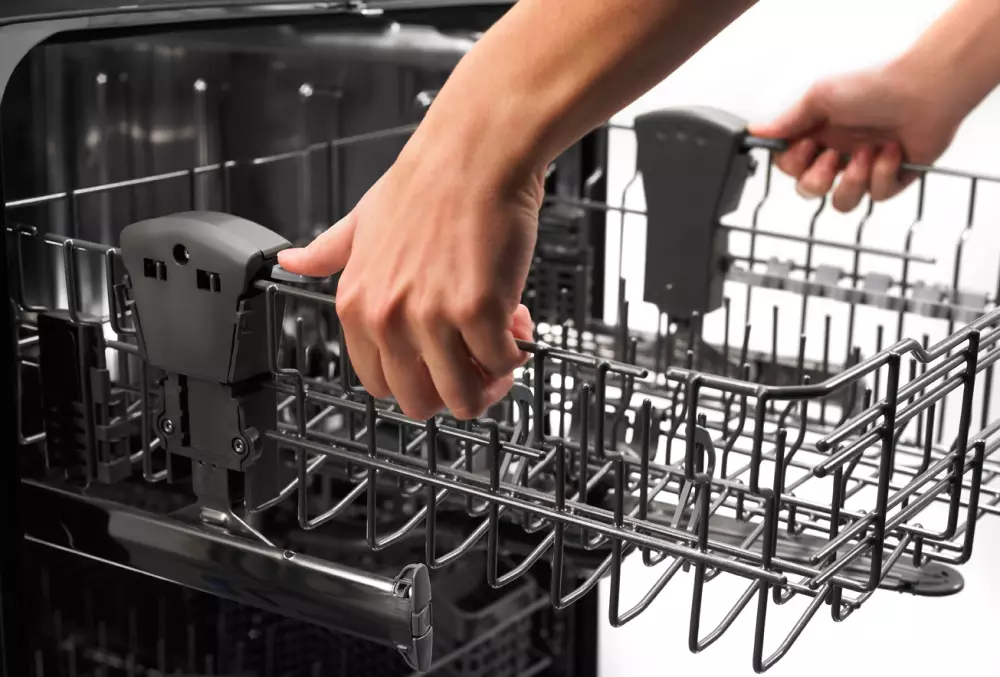How to Clean Linoleum Floors: Easy Cleaning Tips and Tricks to Maintain It
Linoleum floors are durable and eco-friendly, making them easy to clean and maintain. However, they require extra caution compared to other cleaning flooring options. Using gentle cleaning methods and avoiding abrasive scrubbers is essential to prevent damage and staining. Deep cleaning and proper care from a professional cleaning service can ensure that linoleum floors last for many years while retaining their appearance. Read on to find out how to clean linoleum floors to sustain your floors.
Linoleum floors are popular for homeowners and commercial spaces due to their durability, low-maintenance nature, and environmentally friendly composition.
Made of natural materials such as linseed oil, cork and wood dust, and limestone particles, linoleum floors are sustainable and provide a unique and stylish look.
However, linoleum could be more resilient compared to other flooring options, meaning cleaning requires a little extra care.
This blog post will explore some easy cleaning tips and tricks to help you maintain your linoleum floors and keep them looking their best.
Whether dealing with everyday dirt and grime or tackling tough stains, we've got you covered. So, let's get started and learn how to clean linoleum floors like a pro!
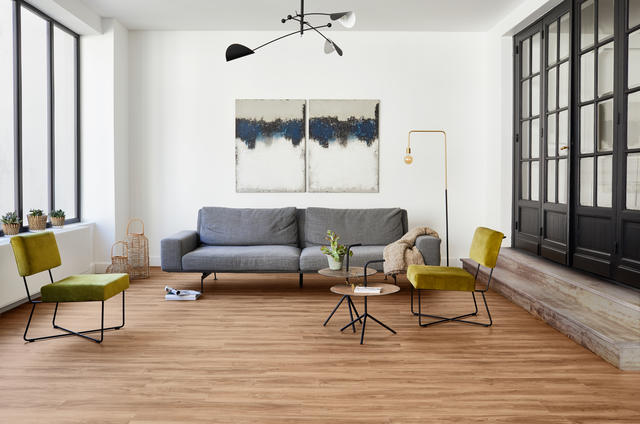
What You'll Need
Instructions
1. Remove loose dirt and debris using a vacuum cleaner
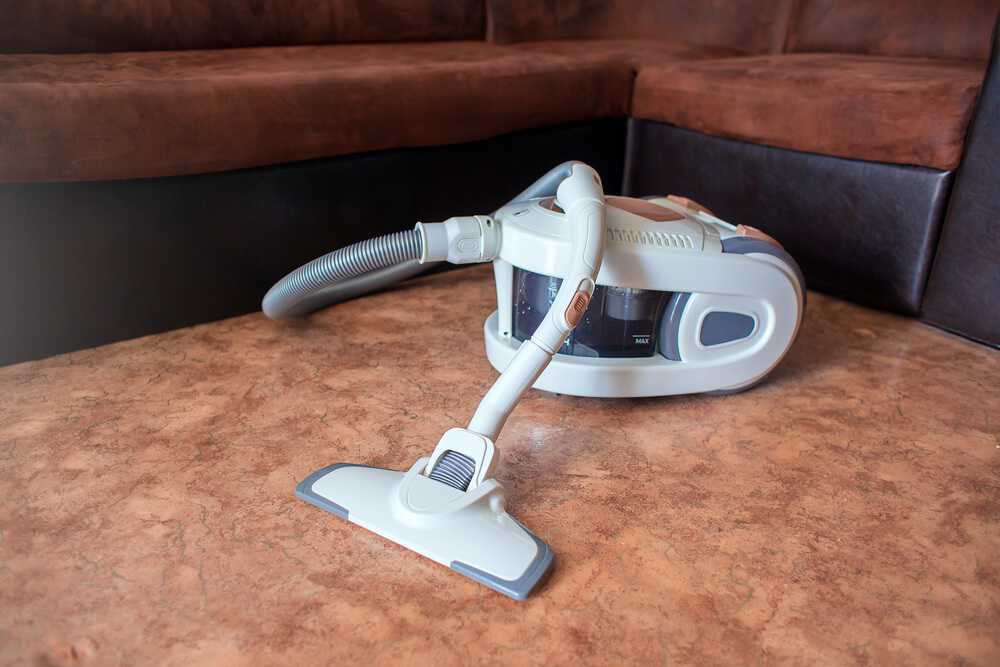
The first step in cleaning linoleum floors is removing loose dirt and debris. This is an essential deep cleaning step because any grit, dust, or dirt particles on the floor can scratch the surface of the linoleum when you start mopping, causing damage to the finish.
To accomplish this, you can use a vacuum cleaner with a "hard floor" setting or a broom to thoroughly sweep the entire floor area. Make sure to sweep or vacuum corners, crevices, and spaces beneath furniture and fixtures, as these areas are often overlooked and can collect significant debris.
2. Wipe using a dry microfiber cloth
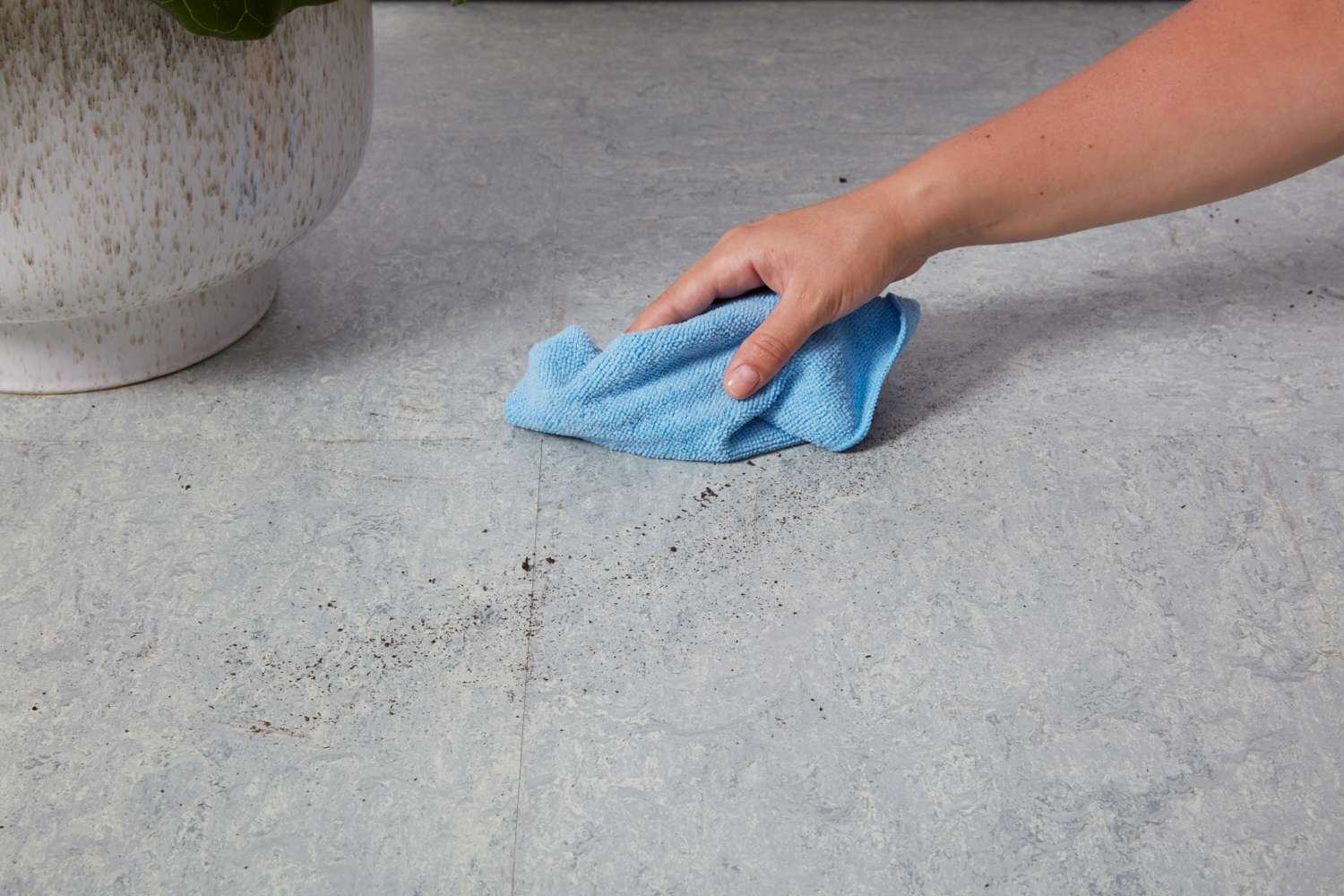
After using a vacuum cleaner to remove loose debris and particles from the linoleum floor, the next step is to wipe the entire floor with a dry microfiber cloth. This step is essential to remove any remaining dust or grit from the floor's surface, which could cause damage during the deep cleaning process.
When wiping the floor, covering the entire surface area, including corners and edges, is essential to ensure no debris is left behind. The microfiber cloth should be used back-and-forth, pressing down firmly to pick up any stubborn dirt or particles.
3. Prepare a cleaning solution of hot water and dish soap
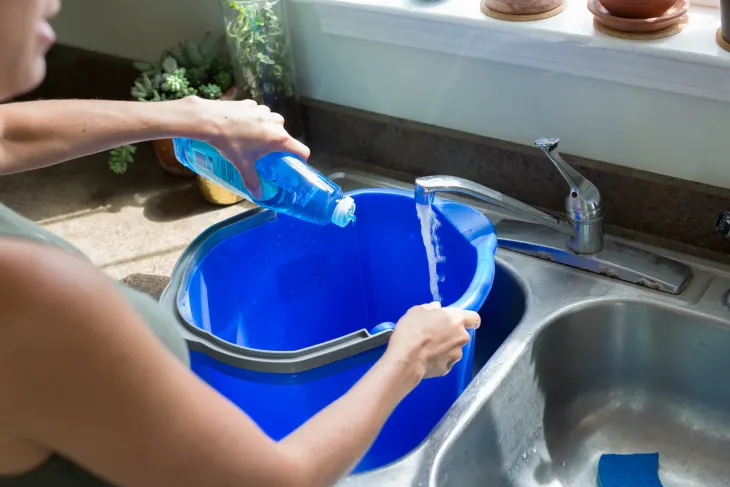
To prepare a cleaning solution for linoleum floors, you will need a bucket, a gallon of hot water, and some regular, store-bought dish soap.
First, fill the bucket with hot water and add 6 to 8 drops of dish soap. It's important to avoid using anything that is excessively abrasive or acidic because it could damage the surface of the linoleum. Therefore, it's recommended to stick with a mild dish soap that you would use on your dishes.
Once you have added the soap to the hot water, gently whisk the cleaning solution to ensure that the soap is evenly distributed throughout the water. This cleaning solution will be used to mop the floor, so please make sure it's ready before you start cleaning.
4. Make an alternative cleaning solution with white vinegar and water
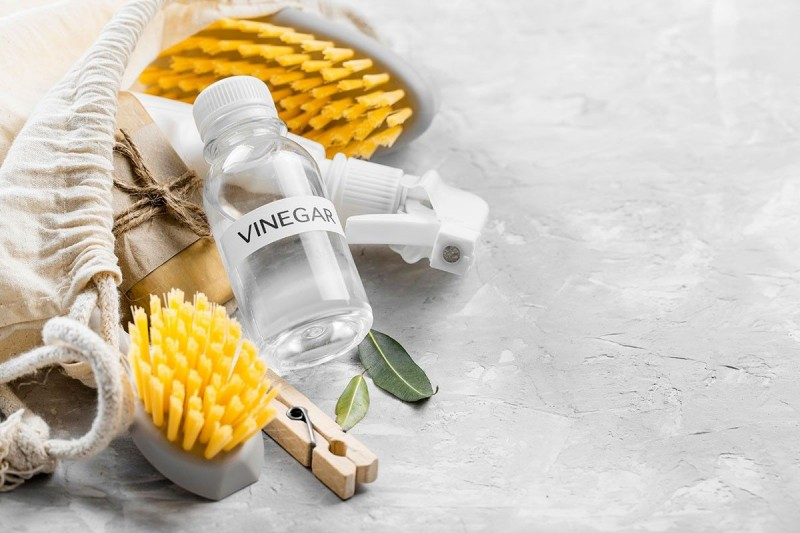
Making an alternative cleaning solution with white vinegar and water is a natural and effective way to clean your linoleum floor deeply. Vinegar is a popular household cleaning product because it is inexpensive, readily available, and safe. Unlike harsh chemicals, vinegar is gentle and non-toxic, making it an ideal choice for cleaning floors.
You can use white or apple cider vinegar for this cleaning solution. Mix one cup of white vinegar in a bucket with every gallon of hot water. Add a few drops of lemon juice to the mixture for a fresh citrus scent. The acidity in vinegar is low enough that it won't harm the linoleum's finish, but it's still powerful enough to remove dirt and grime.
This alternative cleaning solution can be used in place of the dish soap and water mixture. It's a great option for those who prefer natural cleaning products and want to avoid harsh chemicals. Plus, it's an affordable and eco-friendly way to clean your linoleum floor.
5. Sprinkle baking soda for deep cleaning
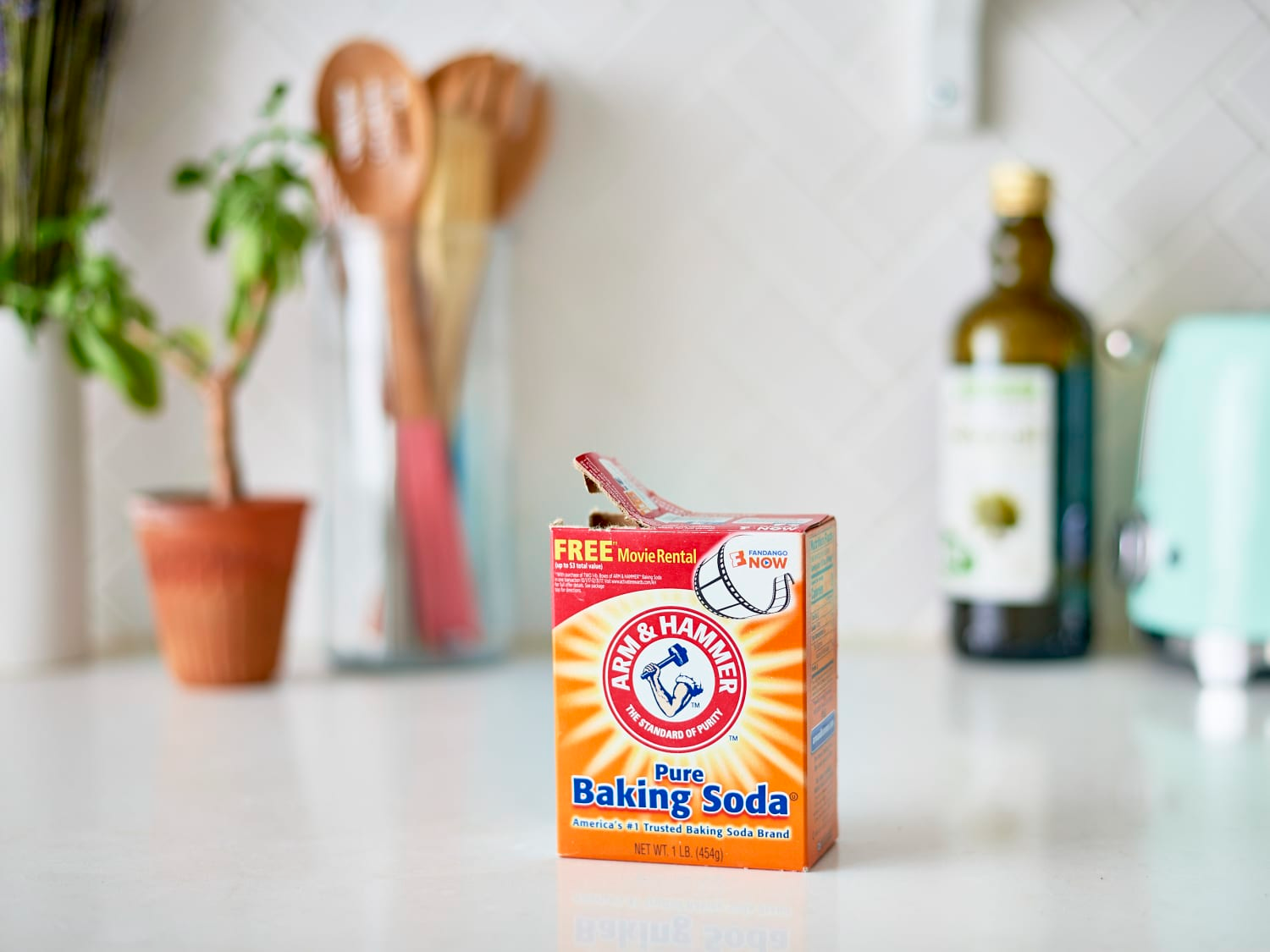
Baking soda is a natural and effective cleaning agent that can help remove stubborn stains, grease, and dirt from a linoleum floor. When mixed with vinegar, it can create a chemical reaction that helps break down dirt and grime. Sprinkling baking soda on the floor before mopping can help enhance the cleaning power of the solution and provide a deep clean.
To use baking soda to clean a linoleum floor, sprinkle it generously over the floor's surface. Use a broom or a dry mop to spread the baking soda evenly, making sure to cover all areas of the floor. Allow the baking soda to sit for at least 10 minutes before proceeding to mop the floor with a cleaning solution.
It is important to leave baking soda on the linoleum floor briefly, as it can scratch the surface if it is not removed promptly. Additionally, it is important to avoid using too much baking soda, as it can create a white, powdery residue that can be difficult to remove.
6. Dampen the microfiber mop with the cleaning solutions

Once you have prepared the cleaning solution, it is time to dampen your dry mop. Start by dipping your mop or scrub brush into the bucket of cleaning solution. After doing so, wring it out thoroughly to eliminate any excess water.
Using as little water as possible when mopping a linoleum floor is critical since standing water can cause damage. The mop fibers should only be damp with the cleaning solution to avoid excessive moisture on the linoleum floor.
Excess water on the linoleum surface can cause it to become discolored or warped, leading to costly repairs or replacement. Therefore, it is essential to ensure the mop is only lightly soapy and moist before you begin mopping the floor.
7. Start mopping the linoleum flooring
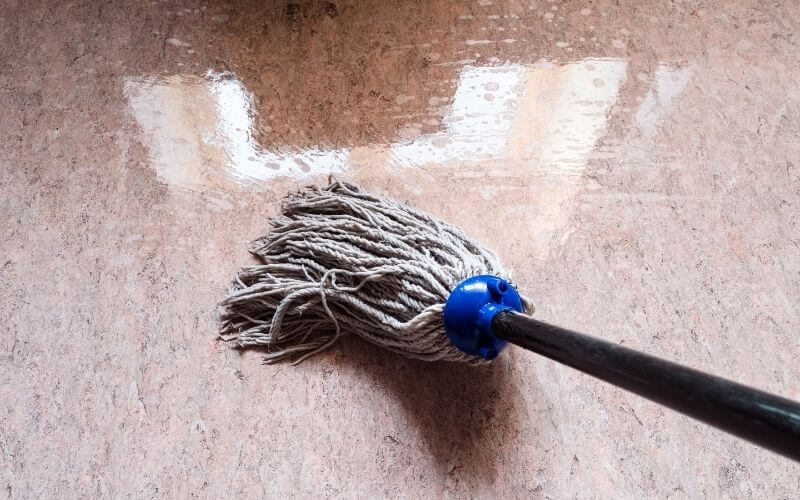
When mopping the linoleum floor, it is essential to work in small sections to avoid leaving behind too much water. First, dip your mop or scrub brush into a bucket with the solution. Wring out the mop or scrub brush to remove any excess water so that it is just slightly damp.
Next, create a section of about 6 x 6 feet of linoleum flooring you will be cleaning. Start at one end of the area and move the mop back and forth across the floor, applying gentle pressure to lift away dirt and grime. Be careful not to leave too much water on the surface of the linoleum, as it can be damaged by standing water.
Once you have finished cleaning one section, dip the mop or scrub brush back into the bucket, wring it out again, and move on to the next section. Repeat this process until you have cleaned the entire floor.
After mopping the floor, empty the bucket of soapy water or vinegar solution and rinse it with clean water. Rinse the mop or scrub brush to remove any remaining soap or debris.
8. Rinse the linoleum floor
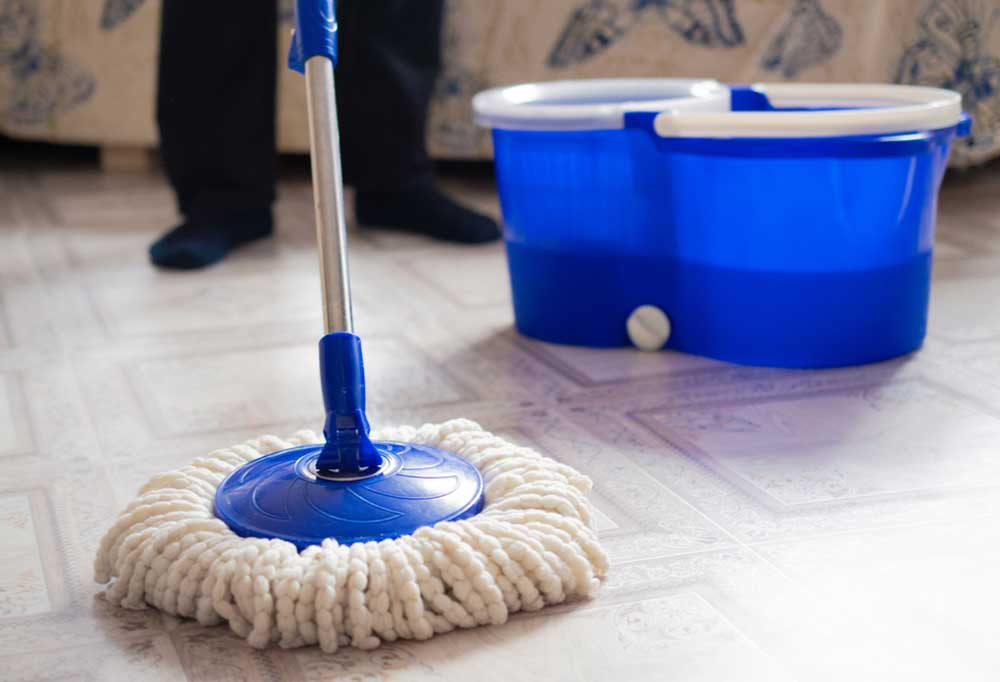
After mopping the linoleum floor, it's important to rinse it thoroughly to remove any remaining soap residue. Soap residue on the floor can make it sticky or dull-looking over time and may also attract dirt and dust.
You'll need a bucket of clean, hot water to rinse the floor. Fill the bucket with clean water, and use a clean mop or rag to rewash the floor, this time in smaller sections (6 x 6 feet), to ensure that every part of the floor is thoroughly rinsed.
You can start by dipping the mop or rag into the bucket of clean water, wringing it out well, and then wiping the floor in back-and-forth motions, making sure to cover the entire area in the section you are working on. Then, rinse the mop or rag in the bucket, wring it out well, and repeat the process in the next section of the floor.
9. Dry the floor using clean towels or rags

After rinsing the floor, the next step is to dry it thoroughly. Any excess moisture left behind can lead to water damage or potential hazards, so it's essential to take the time to dry the floor properly.
Use old towels or rags to dry the floor's surface completely, pressing down firmly to absorb as much moisture as possible. Pay special attention to any areas of the floor that may be particularly prone to water damage.
Once you have dried the entire floor, please leave it to air-dry for a few hours. It's important to avoid walking on the floor or placing any furniture on it until it is scorched. This will help to prevent any water damage or hazards that might arise from standing water.
10. Scrub stubborn stains with baking soda and white vinegar
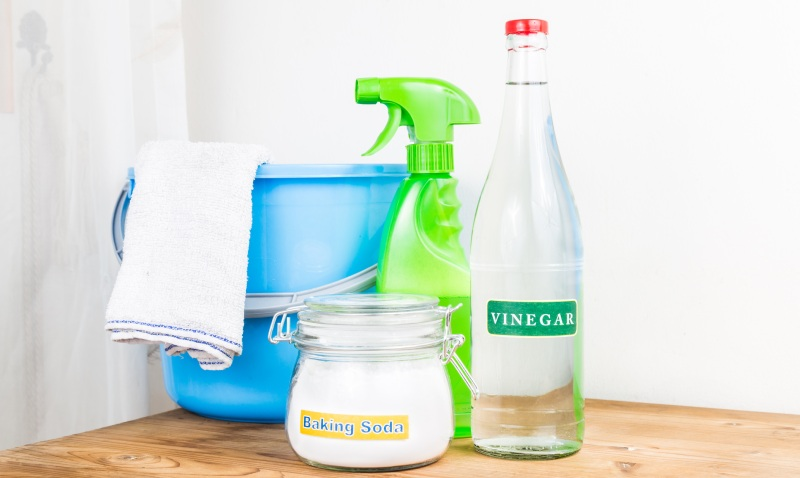
If the stubborn stains on your linoleum floor remain after the initial cleaning, you can use baking soda and vinegar to tackle them. Start by generously applying white vinegar to the affected area and letting it sit for about 30 minutes. The vinegar will begin to break down the stain or buildup. If tough stains are still visible after 30 minutes, apply more vinegar and sprinkle baking soda. Combining vinegar and baking soda will create a bubbling reaction that will help loosen the stain.
After 10 minutes, use a soft-bristled brush or microfiber cloth to scrub the area in a circular motion. Rinse the area with clean water and repeat the process if needed.
Remember to avoid using abrasive cleaning tools that can damage the surface of the linoleum flooring. Always test the cleaning solution on a small, inconspicuous area of the floor first to ensure it won't cause any damage.
Keep Your Linoleum Floors Spotless and Shining
Linoleum floors are a durable and cost-effective flooring option that can add a touch of elegance to any room.
However, cleaning them regularly using suitable cleaning methods and products is important to maintain their beauty and longevity.
Following the easy cleaning tips and tricks outlined in this article, you can keep your linoleum floors looking their best for years.
You can also achieve a clean and clutter-free living room by consulting our ultimate guide on cleaning and tidying up your living area effectively.
FAQs
How often should you clean your linoleum floors?
Generally, it's recommended to clean a linoleum floor once a week, but in some cases, it may need to be cleaned more frequently, but at most once a month. The best way to tell if your linoleum floor needs cleaning is to conduct a daily, meticulous inspection. Even if the floor was just cleaned yesterday, it's essential to clean it if dirt and stains are visible.
Can you steam mop linoleum floors?
It's not recommended to steam mop linoleum floors as they are created with wood pulp, similar to wood, which means they are porous and can be damaged by excess moisture. If you must use a steam mop on a linoleum floor, use it sparingly and with little steam. Linoleum is also not recommended for use in basements or moist, humid bathrooms due to the possibility of flooding.
How often does linoleum need to be sealed?
Linoleum needs to be sealed every two to six months, depending on the level of foot traffic on the floor. If there is little activity on the floor, the sealing period could be extended to once a year. However, if the floor is exposed to pets or high activity levels, it may need to be sealed more frequently.
